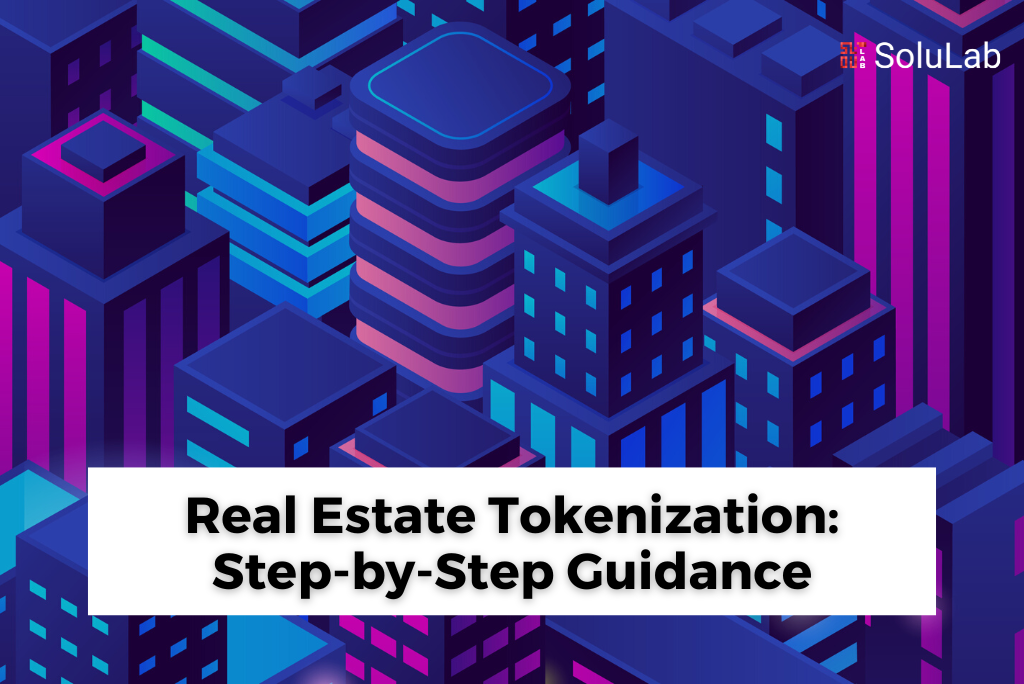
Tokenization as a form of asset securitization is recommended to carry out in order to enhance traditional schemes applied for real estate tokenization and construction project financing. It increases the liquidity of large expensive real estate objects by way of selling them as smaller lots. As a rule, real estate assets and objects under construction, which physically cannot be split and sold in smaller parts and which already generate or will generate in the future predictable cash flow are being securitized. This cash flow constitutes a return on investment and is primarily of interest to investors.
There are two common securitization scenarios:
- Construction project financing: The securitization vehicle issues securities (debt instruments or certificates) and uses the proceeds of such issuance to invest in a specific development project with the objective of selling this project in the relatively near future (usually within three years). The securitization vehicle will receive the proceeds of the sale of the project over the coming three years or upon completion and will pay an income to the security holders either based on fixed interest or variable interest or a combination of both.
Sample case: Clif ord Capital, a Singapore government-backed infrastructure financier, has launched Asia’s first securitization of project finance loans, sourced from five commercial banks. The portfolio, worth US$458mn, comprises 37 infrastructure loans, covering 30 projects spread across 16 Asian and Middle Eastern countries. They have been bundled into three notes and are to be listed on the Singapore Exchange. The notes were issued by Bayfront Infrastructure Capital, a company-sponsored by Clif ord Capital. The projects are at a range of stages, with 75.6% being operational with “stable and predictable cash flows” and the remaining 24.4% at the advanced construction stage.
- Existing real-estate object financing: Existing real estate can be bought or refinanced using securitization vehicles. This is usually done in order to replace bank financing if existing credit. lines are needed for new projects. The proceeds from rental payments generate an income stream for investors. Again, the relatively stable coupon associated with this type of financing can be attractive to investors.
Read also: What You Need to Know About Investing in Tokenized Real Estate
Sample case: In 1999, the Peel Group replaced bank debt and provided itself with liquidity in a way of Traf ord Centre Real Estate Securitization. They provided investors with an attractive opportunity to buy securitized papers from one of the UK’s premier shopping centers. Traf ord Centre was a developed site located in an excellent catchment area, and before the transaction commenced 98% of its space was already let out through long-term lease contracts to a broad mix of well-known retailers. The structure was a two-tier debt financing structure that was secured by the rental cash flows of the property.
The overall structure of the transaction
There is a commonly accepted step-by-step scenario of securitization, illustrated further. This scenario is viewed from the point of view of an Arranger. This scenario can be altered at the customer’s discretion though reflects accumulated average market experience.
1. Allocation of an asset
An asset securitization transaction begins with the asset itself (in our case, real estate), which is owned by the Originator on a recourse basis. A securitized asset must not be burdened and must be alienated unhindered. If the asset is a pledge on a loan, then this loan must be transferred along with the asset.
Securitization may be carried out according to an irrevocable scenario with the transfer of control over the object. In this case, the asset is sold in trust, and shares in this trust are offered to investors as Asset-Backed Security. Alternatively, the scenario may be revocable without transferring control of the asset. In this case, the asset is sold to LLC or another company, which in turn issues debt securities, secured by the acquired asset. The bond coupon is paid from the rental income of the property, and repayment of the principal is done through the sale of the asset.
2. Initiation
The Originator of the asset engages and assigns a company in charge of putting the transaction together. It is called the Arranger/Sponsor. Typically, this role is occupied by an investment bank, although in the case of digital securities only a few companies offer deal arrangement services. The transaction Arranger creates a special company, SPV, which will act as a custodian of the asset
3. Creating an SPV
SPV is set up specifically for this purpose and is not involved in any other transactions. The sole purpose of its creation is the acquisition of a group of assets and their refinancing by issuing securities in the capital market.
Securitization transactions imply the transfer of control over an asset and the use of trust or fund structures as common legal forms for SPV. They heavily implement the economic function of independent management of an asset in the interests of a group of beneficiaries. A Trustee, in this case, is appointed by the Transaction Sponsor. Conversely, transactions looking for retaining control over an asset, require SPV corporate forms of companies like LLCs, exempted companies, etc. The deal Originator creates it with minor equity and keeps control over an asset all the time.
Read also: Importance Of Tokenization Of Assets
Tax, political, and economically neutral jurisdiction is usually chosen for SPV localization. Offshore jurisdictions like the Cayman Islands are frequent choices as there is no taxation on “exempted” companies and regulations are tailored to the needs.
4. Selling an asset
In this step, the asset Originator sells the asset/group of assets to a newly created SPV with a complete non-recourse transfer of ownership. It is important that in the case of Originator’s bankruptcy, the sale transaction was recognized as a “True sale” and the asset sold was completely isolated in legal and physical terms from the Originator. Settling this issue will create the so-called bankruptcy remote and will protect SPV investors in adverse situations. Such protection increases the credibility of securities and raises their potential rating.
5. Securities/tokens issuance
Further, SPV issues securities/tokens in an amount comparable to the value of the asset for its refinancing and settlement with the Originator. Those securities may be stocks, bonds, PNP participation notes, shares in a trust, etc. Usually, a consortium of banks is directly involved in issuing and placing such securities, but technically the SPV company is able to carry out issuance either itself or with the help of consultants. Referring to the technology-neutral European legislation and absence of regulations in Caymanian one, the issuer assumes full responsibility for the issuance of tokens, their legal binding to issued securities, technical administration, securing and operational support of transactions, as well as tailoring the offering documents to needs of digital tokenization. In a legal aspect, the regulator will qualify tokens equivalently to issued securities.
6. Credit Enhancement
Issued securities may undergo the process of credit rating assessment by rating agencies and then be offered on the capital market. Obviously, being awarded the securities credit rating makes a crucial choice factor for institutional and professional investors. Also, the rating can be improved by a set of preliminary measures called Credit enhancement such as loan agreements, guarantee letters of an Originator, keeping some cash in reserve fund within SPV, diverse insurance protection, and so on.
Implementation of Credit enhancement measures is optional and their scope and scale are determined by the Arranger in the context of reaching the best result for securities sale. In the basic scenario, they may not be carried out at all.
7. Credit rating evaluation
To increase the interest of potential investors in the issued ABS (Asset-Backed Securities), it is highly desirable to undergo evaluation by one of the rating agencies and get an investment-grade credit rating. This step is also optional and is required mostly for targeting large groups of retail investors.
8. Asset management
For trust SPVs, the asset is managed by a Trustee in the interests of the beneficiary investors. He assigns service and management companies for the maintenance and administration of the asset. He holds asset titles, manages trust accounts, and secures getting due cashflows by investors.
9. Sale of securities
Sales are targeted to investor groups by the initial placement strategy. Worth to note, the promotion options for an offer are determined not only by marketing priorities but also by legal restrictions in chosen jurisdictions. In particular, among feasible promotion options for an EU-countries market, there are private placement, public placement for professional or retail investors, and reverse solicitation. Foreword, tokens can be initially sold in two ways: by an issuer or by a financial company via an authorized marketplace.
Summary
Securitization opens for originators a new way to raise capital, which makes originators less dependent on banking financing and lets to reach new investor pools featured by smaller investment chunks and thus increase the potential interest for the object, and therefore gain its price. In the case of debt fundraising, commonly, the interest rate of bonds backed by a securitized asset is substantially lower than rates of bank loans or interest on bonds of the parent company. Furthermore, the Loan to Value (LTV) ratio reached in this case is much higher (90–95%) than when financing by bank loans (60–70%).
For investors, securitization enables investment into real estate with all their upsides, including investments in projects which were not accessible without tokenization due to high entry barriers, without incurring the need to manage and administer it. In turn, a better choice of investment vehicles entails better returns. The option of investing a smaller chunk into a project enables an Investor to diversify its unsystematic risk and thereby improve the overall portfolio parameters.
Blog Credits: Medium




